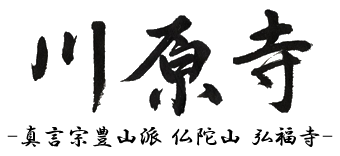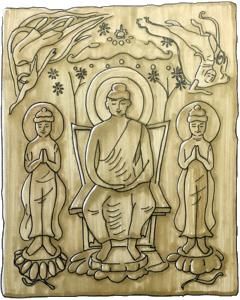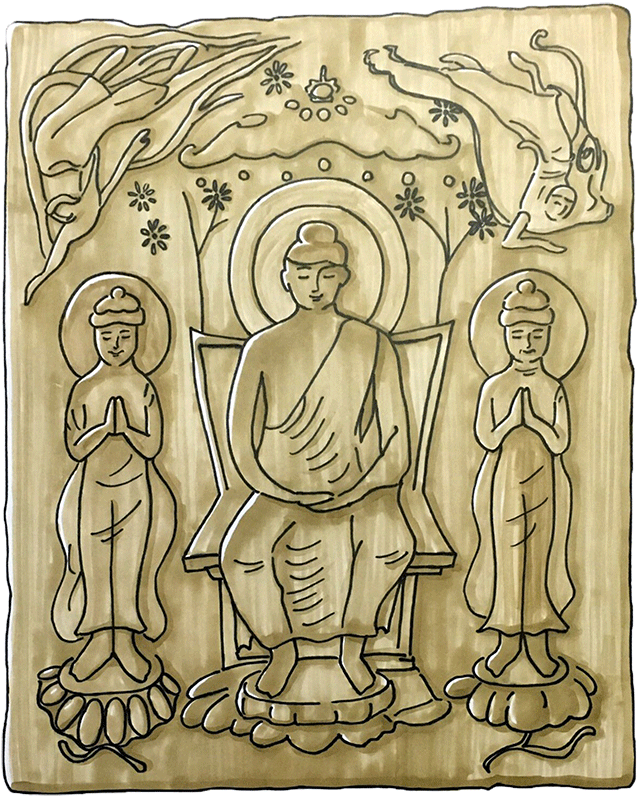It looks like the Yamato Imperial Court’s important figures might have a passion to the temple.
Among them, what is noteworthy is the existence of Empress Saimei.
Empress Saimei was Mother of Emperor Tenji and his younger brother Emperor Temmu.
Therefore, the brothers are said to establish the grand temple to commemorate their mother to make the place very special.
Originally, the temple was built at the very site where the Empress’s temporary residence “Kawahara Palace” was located.
In the meantime, the Asuka region was the political center of the early Japan of 1,400 years ago, and was a quite advanced international society having other East Asian countries close by.
In the society, where ancient Chinese and Korean languages might be spoken, in addition to Japanese. In such circumstances, the young princes were aiming to unify the country realizing the tense situation overseas with their all senses.
It is quite easy to imagine that they had lots of agony as well as hidden agendas.
That was the time when Kawaharadera temple was established.
In the middle of that complicated situation, “Isshi No Hen”, a political conflict occurred in 645.
That was a coup d’état, in which a political monster Sogano Iruka was assassinated that triggered Japan to move forward toward a law-abiding state.
Kawaharadera/Gufukuji Temple stands at the place overlooking the historical stage.
The powerful Soga Clan’s headquarter was said to be located on the south hillside of Amakashi Hill which is to the west of the temple, while the coup took place at the Asuka Itabuki Palace on the opposite east side of the temple. The distance between the two place is approximately 1km. Both could be seen close from Kawaharadera Temple. So, it would be easy for you to imagine how urgent the tension had to be 1,400 years ago.
The record on what had really happened there is, frankly speaking, not enough. But isn’t it fun to give your thoughts on the ancient coup d’état, walking around the vast precincts of Kawaharadera Temple? Quite surprisingly, there are the foundation stones of the Asuka period (1400 years ago) made of agate and you can touch them!
We are happy if you could feel the sensation of the Asuka region, thinking about the mysteries surrounding Kawaharadera Temple.




